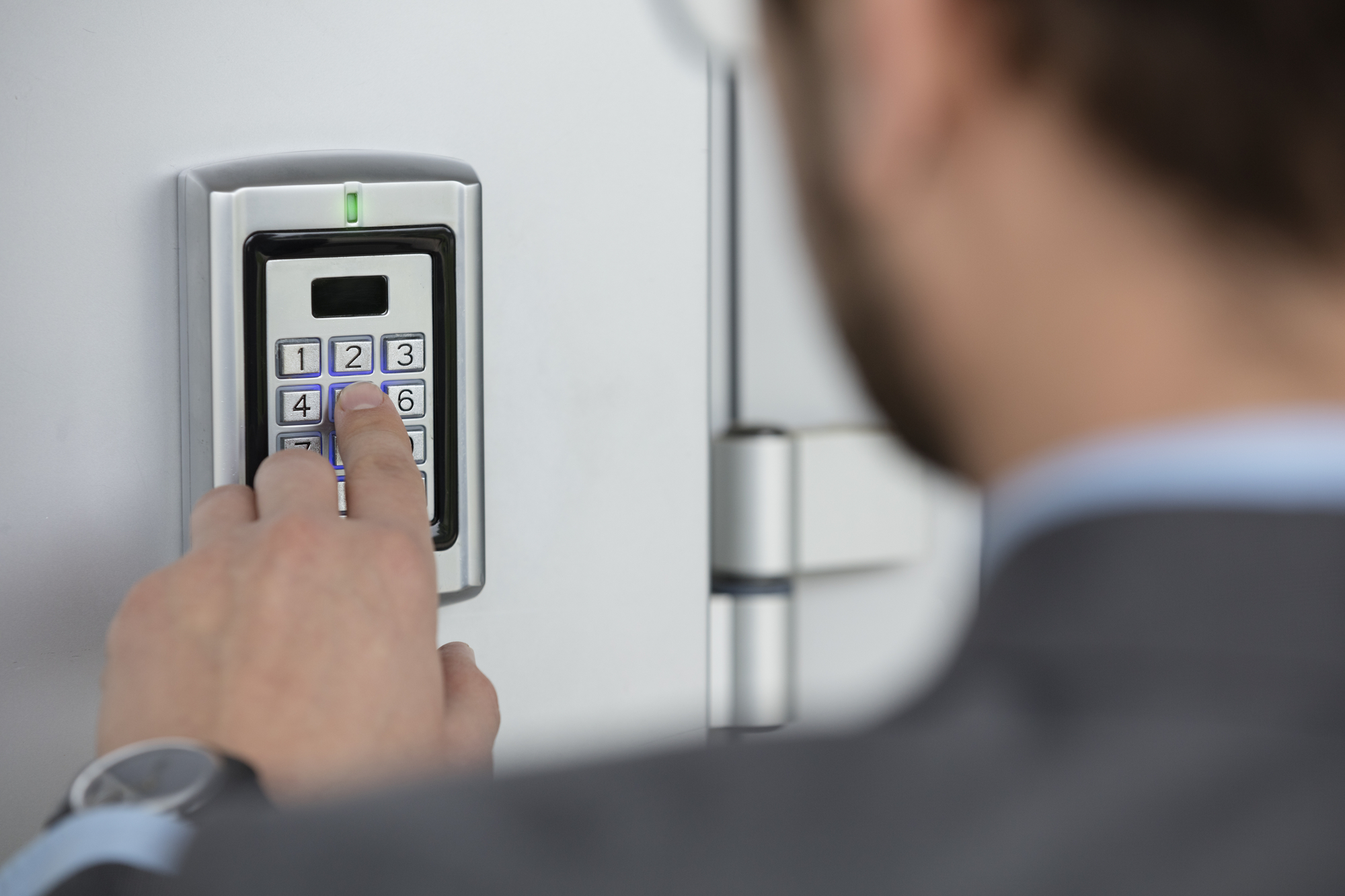Electronic locks come in many varieties, from smart home integrated locks and Bluetooth locks, to keypad locks and biometric locks. Fail secure and fail safe locks are two examples of measured security hardware that provides a great range of security and safety to a range of residential and commercial properties. In this blog entry, the lock installation experts here at Chicago Locksmiths will detail the main differences between fail safe locks and fail secure locks.
Fail Safe Locks
Fail safe locks stay locked with the flow of electricity, and unlock when the flow of electricity is broken. The term fail safe originates from the safety of people inside a property in the event of an electricity failure – also known as ‘fail unlocking.’ Many modern residential locks have electronic components that activate dead bolts with motors. Fail safe locks require a running motor for the deadbolt itself to be positioned in the door jamb – and when the motor turns off, the deadbolt automatically retracts back into the door. Electromagnetic locks have features that become magnetic when electricity is detected, attaching it to the door frame – causing the door to stay locked. During power outages, electricity stops flowing, causing the magnets to demagnetize. All electromagnetic locks are thus considered fail safe. Electric strike locks are fitted with mechanisms that grab the door’s latch when the door is locked, and which move when the door is unlocked. They can be either fail safe or fail secure – and fail safe strikes require electricity to secure the latch. Fail safe locks are the most popular kind of electronic lock, and can be activated in a myriad of fashions – but will always be open when power is cut.
Fail safe locks are best implemented in contexts in which safety is more important than security. Fail safe locks are bet it to emergency exits – as some emergencies are associated with power failures. This allows people to safely exit a building. Fail safe locks are also ideal in situations where easy access is important. Fail safe locks should never be used to house valuables that you DON’T need to regularly access – as a criminal could simply turn off the power to gain access to these valuebles. Fail safe locks may or may not be ideal for your Chicago residential property’s security infrastructure, based on your unique needs and preferences. If you’re highly concerned with security over rapid emergency exit safety, we recommend fail secure locks rather than fail safe locks.
Fail Secure Locks
Fail secure locks remain locked even after power failures. Fail secure locks are fit with mechanics that keep them locked even with zero flow of electricity. They are known as fail secure, as they allow your valuables to remain secure even in the event of a power failure. The main difference between fail secure locks and fail safe locks are whether the lock remains ‘locked’ as a default. Fail secure locks are generally constantly activated, and need to be actively deactivated – anything that causes electricity to flow will cause fail secure locks to unlock, and when electricity is removed, the lock will move back into place. The majority of modern residential electronic locks utilize deadbolts that are operated with motor activation or deactivation – and these locks can be either fail safe or fail secure. The fail secure iterations of these locks will have a deadbolt that is pulled away with a motor when activated, and slides back into place when deactivated. Electric strikes have mechanisms that are directly installed within the door jamb which in turn holds door latches when the door itself is locked. Fail secure electric strikes let go of latches when electricity is applied rather than holding it in place – and without electricity, fail secure electric strikes will indefinitely keep the door’s latch activated. Electromagnetic locks aren’t inherently fail secure, and they require the flow of electricity in order to have active magnets.
Fail secure locks are best utilized in contexts where security is more essential than the potential for safe emergency exit. Fail secure locks are ideal in environments where valuables are kept – for example, attached to a safe, behind a keypad lock, or in front of an area where cash or valuables are stored. Fail secure locks, however shouldnt be used in environments where safety is a major concern, like the entrance or exit of a big building – especially an emergency exit. Emergency exits should never be fit with fail secure locks. Furthermore, locks that protect any items that you might need rapid access to, like medicine, medical supplies, or emergency tools or food, should never be fit with a fail secure lock. Before deciding if your property will be better fit with a fail safe lock or a fail secure lock, consider whether emergency egress or powerful security is more of a concern for you – and if you have any questions, feel free to ask the lock and door hardware professionals here at Chicago Locksmiths for professional advice and consultation.

